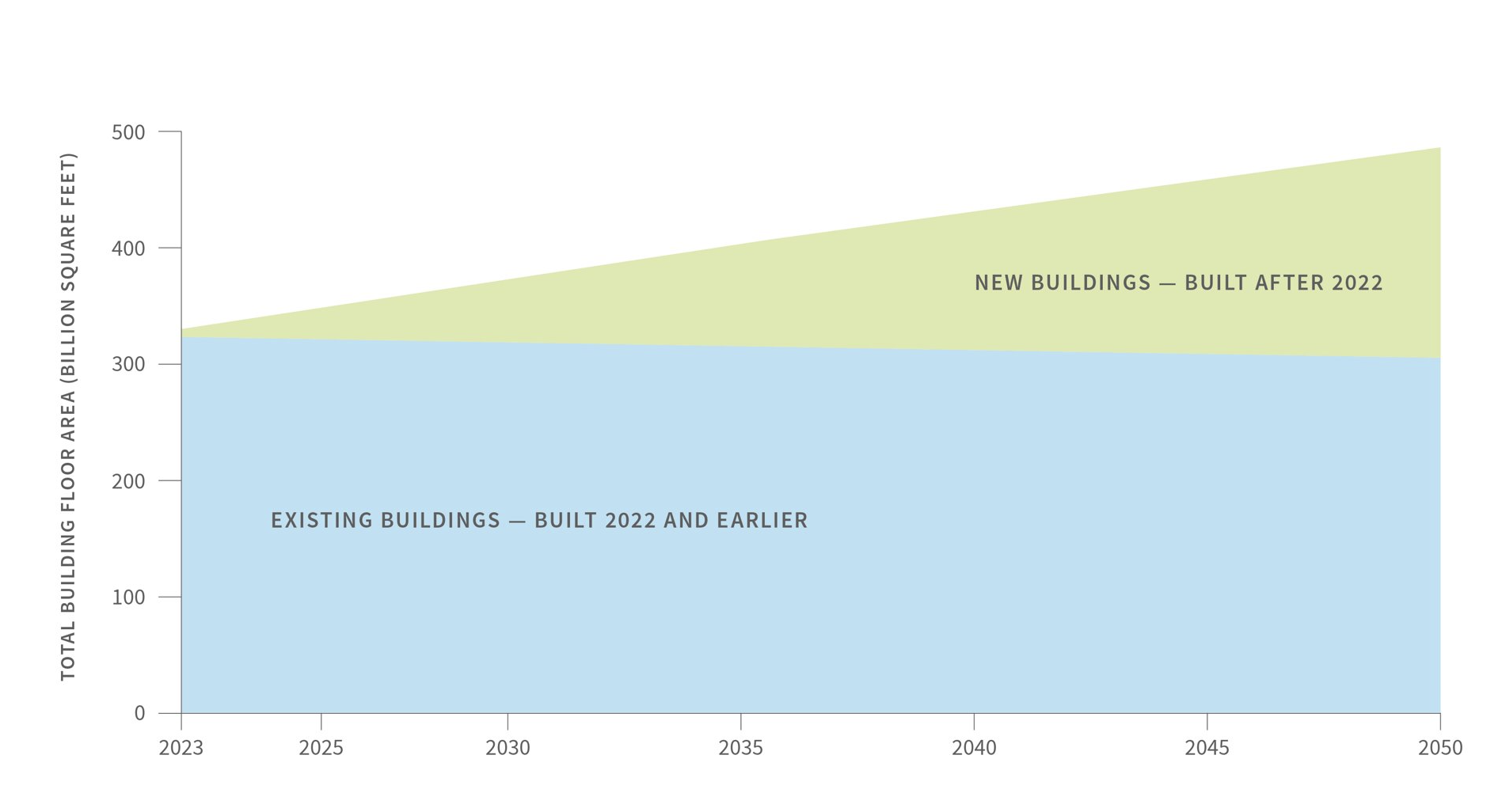Facilities: Embodied vs. Operational Carbon
As concerns about climate change continue to grow, the pressure for decarbonization is mounting. Collectively, we are looking for the most impactful path to carbon reduction and buildings provide a profound opportunity.
The Impact of Buildings
At this point, buildings account for 40% of global greenhouse gas emissions annually. Architecture 2030 estimates that, globally, we will be constructing the equivalent square footage of a New York City every month for the next 40 years, to the tune of 2.4 trillion sq. feet by 2060. Even at this rate, the number of existing buildings today will still account for two-thirds of all buildings on Earth.
Of the 40% of greenhouse gas emissions, two-thirds are related to the function of the buildings, while one-third are related to their construction. Identifying ways to decrease carbon related to constructing and operating buildings isn’t only recommended; it's critical. Here’s a look at the two types of carbon associated with buildings.
Embodied Carbon
Embodied carbon refers to the amount of carbon emissions associated with the production and transportation of building materials. This includes the energy consumed during the extraction of raw materials, the manufacturing of products, and the transportation of those materials to the construction site. The carbon emissions associated with embodied carbon can occur both domestically and internationally. The embodied carbon of a building accounts for up to 30% of its total carbon footprint.
Carbon should be considered in the design phase of new building construction, allowing for opportunities to choose less carbon-intensive materials, source from local vendors, or opt for modular construction options. Additionally, carbon-focused commissioning can provide insights into energy-efficiency opportunities during construction.
Operational Carbon
Operational carbon refers to the amount of carbon emitted during the use of a building over its lifetime. This includes the energy consumed by heating, cooling, and lighting the building, as well as the energy consumed by the appliances and equipment inside the building. Operational carbon is typically the largest contributor to a building's carbon footprint, accounting for up to 70% of the total.
For reducing operational carbon, we recommend following the Energy Management Pathway: Use Less, Use Smarter, Make Your Own. It’s important to first reduce your energy spend as much as possible before undertaking making your own:
USE LESS:
HVAC & Controls
Lighting Systems
USE SMARTER:
Building Management Systems
MAKE YOUR OWN:
Combined Heat & Power
Cogeneration
Energy storage systems
Why It Matters
Understanding the difference between embodied carbon and operational carbon is essential to developing sustainable building practices. Both types of carbon emissions contribute to the overall carbon footprint of a building, but they require different approaches to reduce.
Additionally, the timing of the carbon emissions associated with embodied carbon and operational carbon is different. Embodied carbon emissions occur upfront during the construction process, while operational carbon emissions occur over the lifetime of the building. This means that reducing embodied carbon can have a more immediate impact on reducing a building's carbon footprint, while reducing operational carbon can have a long-term impact.
By taking a holistic approach that addresses both embodied carbon and operational carbon, the construction industry can play a critical role in reducing carbon emissions and combating climate change.
Interested in more specific topics surrounding sustainability? Check out our free monthly webinar put on by industry experts at Foresight Management.

